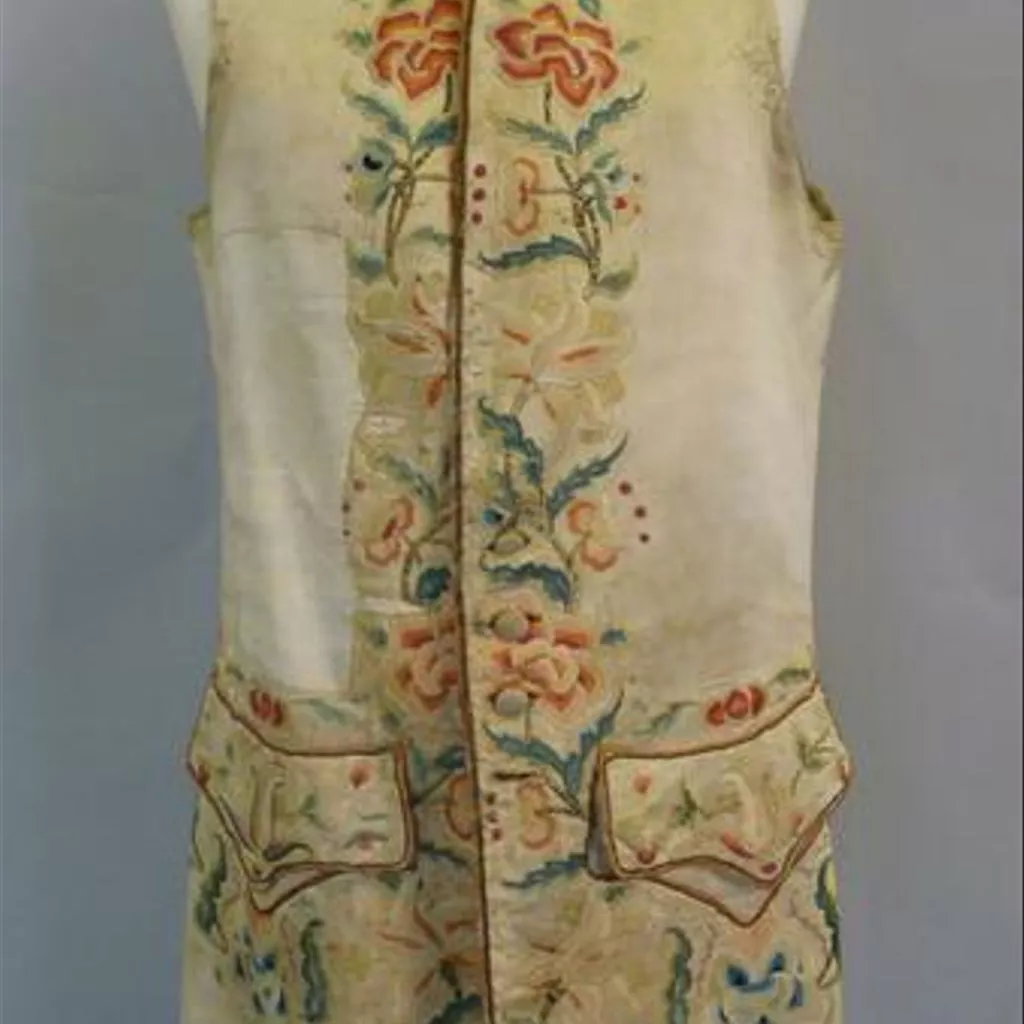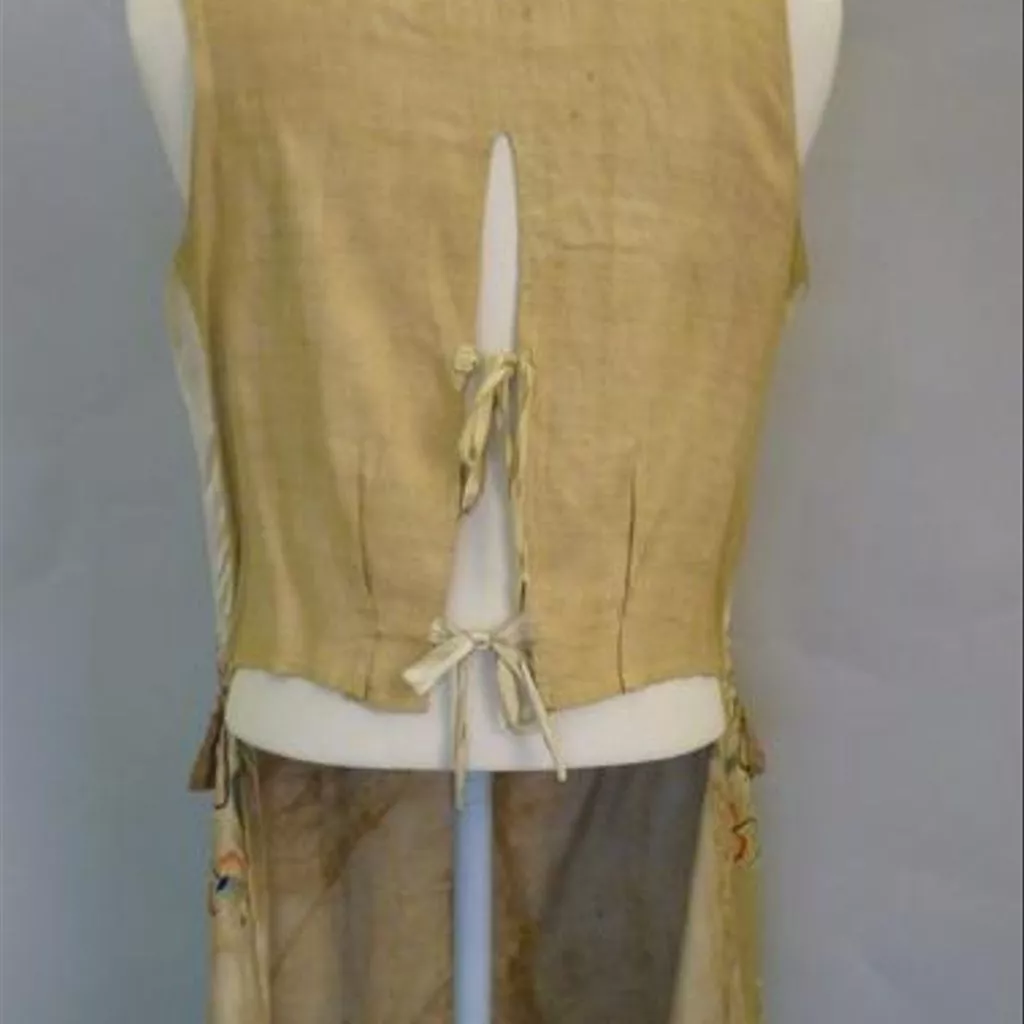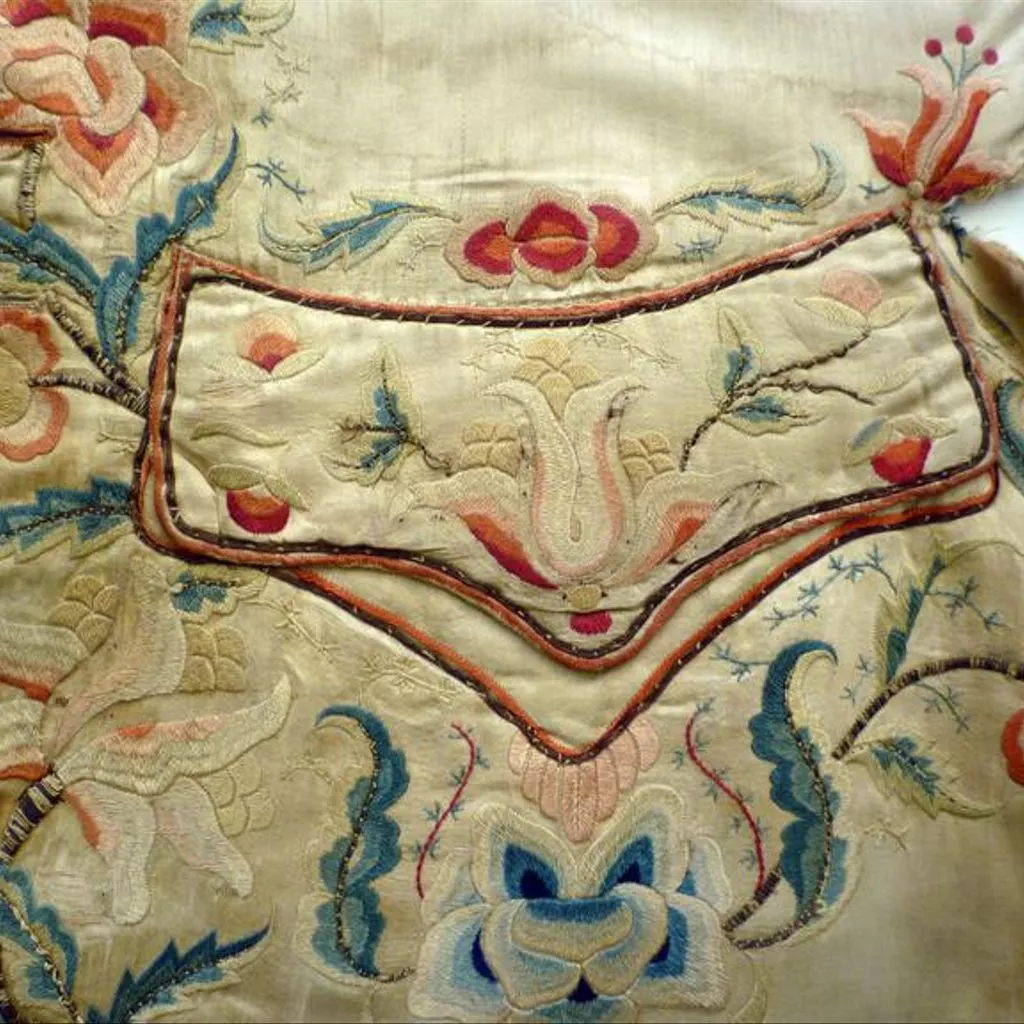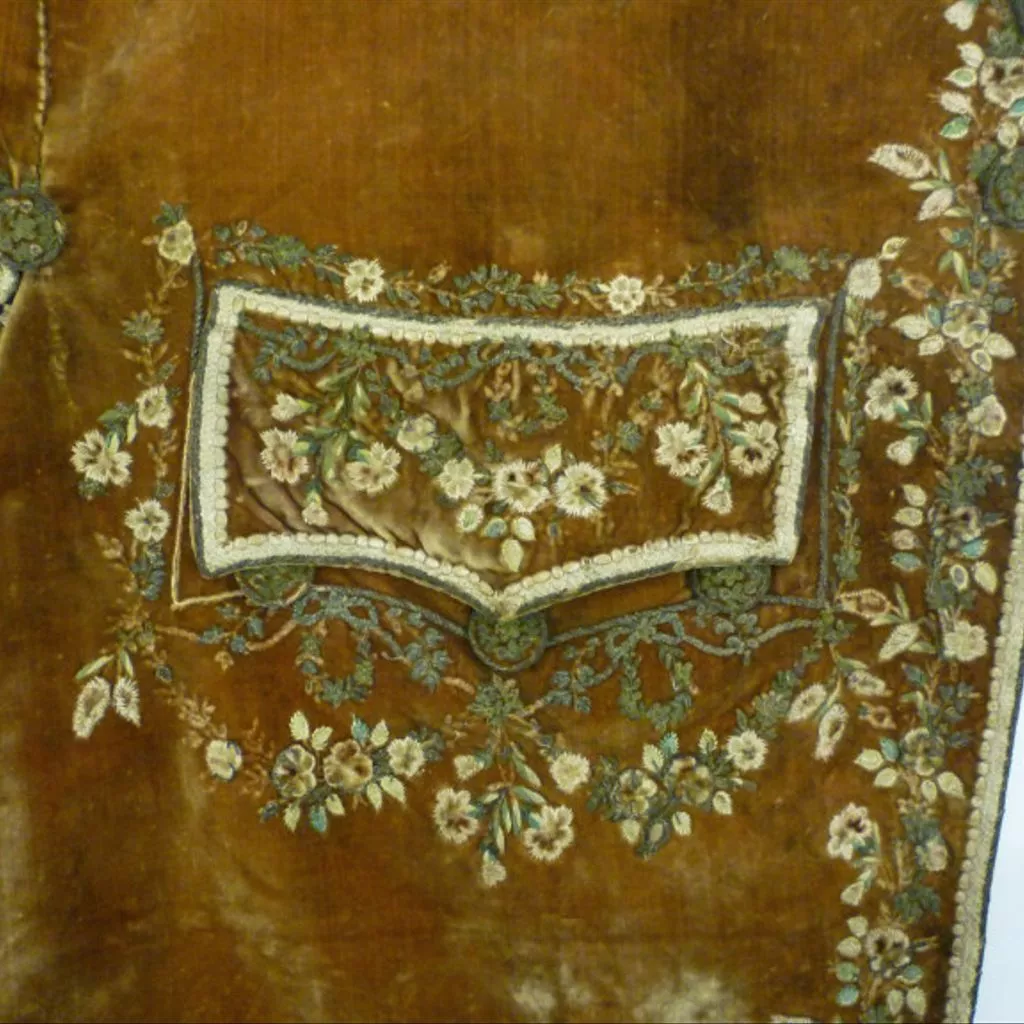Description
Unique
Man’s waistcoat of embroidered, Chinese export silk satin, with a round neck, straight fronts and skirts reaching to the top of the knee. Each front had a pocket opening and shaped pocket flap. The fronts and pocket flaps are lined with ivory silk taffeta, pockets with coarse linen. The waistcoat is embroidered-to-shape with silver thread and silk twist in shades of pink, green and blue in a pattern of large flowers and leaves on the pocket flaps, around the front neck and pockets, and along the front edges and hems. There are 5 worked buttonholes along the left front edge, 1 at the neck and 4 at the waist.
The waistcoat was extensively altered in the late 19th century, probably for theatre costume. The right front above the pocket was patched, the armholes cut larger, the back replaced and the buttons replaced.
Man's waistcoat, 1730s, British; Ivory Chinese export silk satin, embroidered, altered 1870-1910
A man's coat, 1760s, probably French; Tawny velvet, embroidered flowers, in floss, chenille, metal threads; altered 1870-1910
A man's coat of tawny velvet. The neckline is round with a narrow standing collar (2.5 cm). The shaped, two-piece sleeves end above the wrist with a round cuff. The coat fronts curve from neck to hem with skirts below the hip, arranged in pleats. There is an inverted pleat on each side of the centre back opening. There is a scalloped pocket flap on each front at hip level. The pockets are lined with unbleached linen, the pockt flaps with oyster-coloured silk satin. The coat is embroidered to shape with appliqued velvet flowers and embroidery in coloured silks and silver purl, on the collar, down the fronts, on the side of the front skirts, the cuffs and pocket flaps, around the pockets at the back vent. There were 10 buttons (top 2 now missing), covered with velvet and embroidered with silver purl, on the right front, with on buttonhole, cut and worked in tawny silk twist on the left front, corresponding to the 3rd button from the neck. There are 3 buttons below the pocket flaps, 3 on the cuffs, one above the side pleats and one holding them at the hem.
The coat has been altered in the late 19th century or early 20th century for wear in the theatre or as a studio prop. The lining has been patched and replaced in areas with lining and white silk satin. The pleats have been unstitched. The lining of the sleeves has been taken out, the cuffs removed, inverted and lengthened and reattached.














